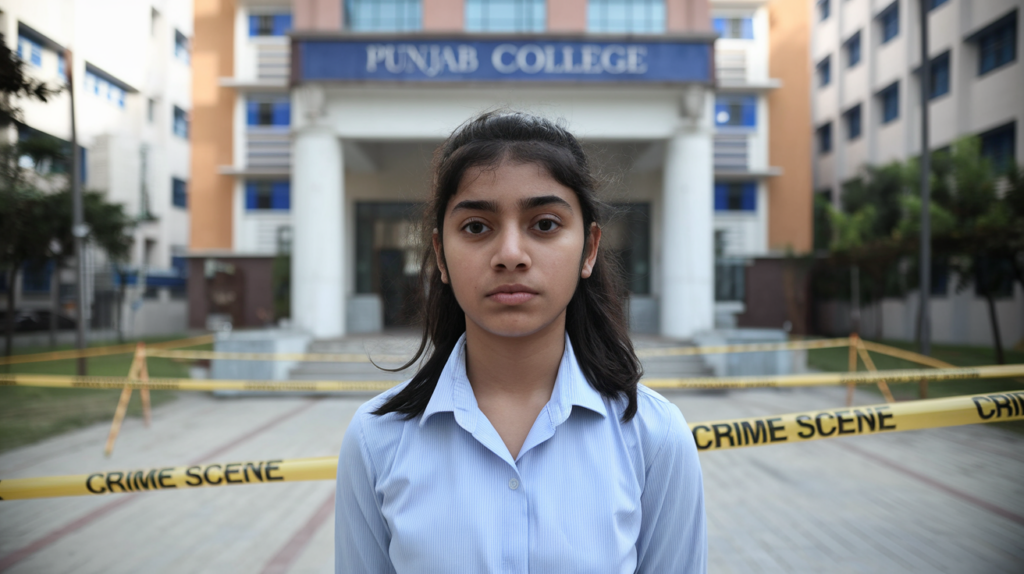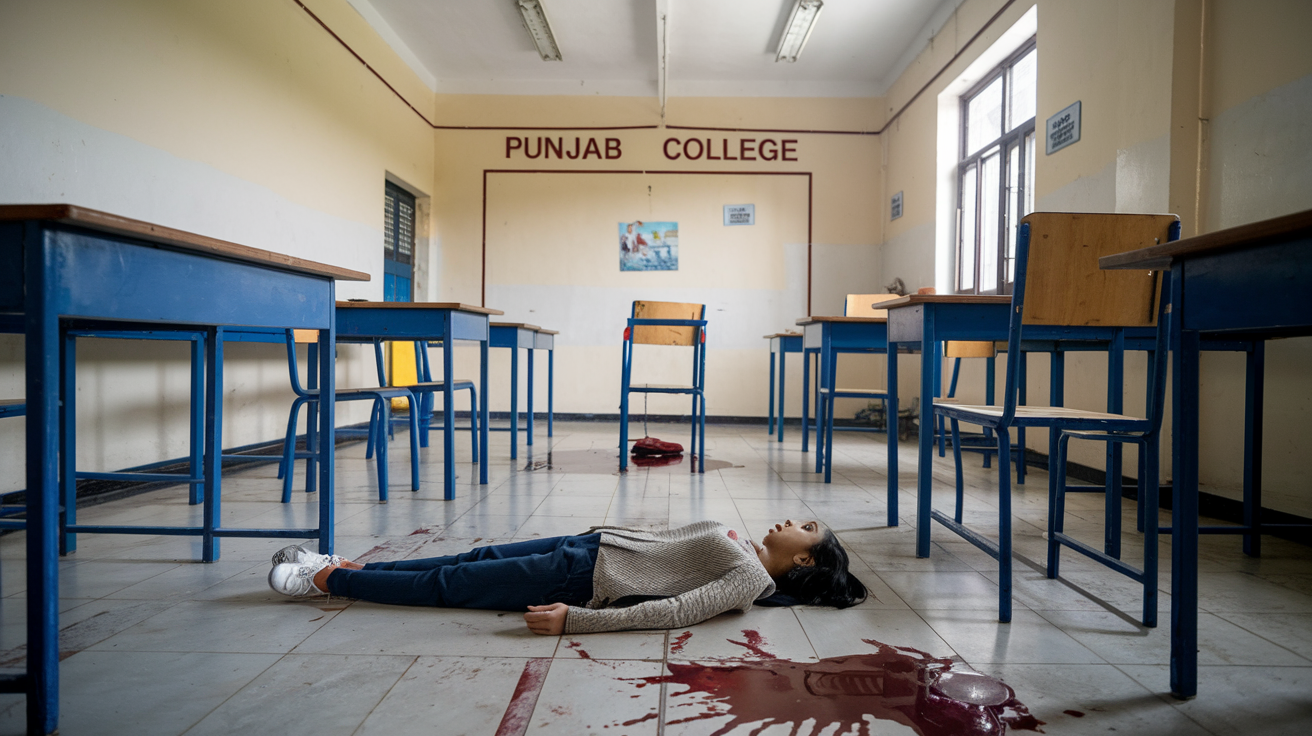Introduction
The “Punjab college crime story: Girl’s alleged rape and protests” is a distressing incident that shook not only the institution but the entire region. A crime that started within the confines of Punjab Group of Colleges in Lahore quickly escalated into a state-wide crisis. This article takes an in-depth look into what transpired, the fallout from the event, and the broader societal issues it exposed. From the alleged assault to the violent protests that followed, this incident revealed critical concerns about campus safety and justice in Pakistan.
What Happened in the Punjab College Crime Story?
In early October 2024, the calm atmosphere of the Punjab Group of Colleges’ Gulberg girls’ campus in Lahore was shattered when a female student reported a horrific crime. She alleged that she had been raped by a security guard in the basement of the institution. This accusation quickly spread, stirring shockwaves across the academic community and beyond. Students and citizens alike were outraged at the idea that such a crime could occur within an educational institution that should have been a safe space for young people.
The allegation was more than just a singular incident. It exposed underlying tensions regarding the safety of women on campus and the lack of accountability for crimes committed within educational institutions.

Protests and Escalation: A Response to the Punjab College Crime Story
The shocking news triggered a wave of protests across various Punjab cities, with students from both public and private colleges taking to the streets. These protests began as peaceful demonstrations, demanding justice for the alleged victim. However, the situation soon spiraled out of control, with violent clashes erupting between protesters and law enforcement.
Property damage became widespread as the protesters turned their anger toward the administration of the college and the lack of proper security measures in place. Buildings were set on fire, and damage to college infrastructure escalated. Police intervention resulted in confrontations that left several students injured and one security guard dead. Hundreds of students were arrested as authorities struggled to bring the situation under control.
Why Did the Protests Turn Violent?
The violence seen during these protests was not entirely unexpected. For years, there has been growing frustration among the student population regarding issues of safety, justice, and gender inequality. The alleged rape in the Punjab College crime story became the spark that lit a much larger fire. Students were no longer just protesting this one incident but were also raising concerns about broader societal issues such as the mishandling of sexual assault cases and the lack of protective measures for female students.
In an environment where sexual violence is often met with impunity, students felt their voices had been silenced for too long. The overwhelming force displayed by the police during the protests only served to exacerbate the tensions, leading to further unrest and violence.
The Casualties: A Grim Outcome
The protests resulted in tragic outcomes. One of the most significant consequences of the violence was the death of a security guard, an ironic turn of events considering a security guard was the alleged perpetrator of the original crime. Several students also sustained injuries, some during clashes with law enforcement and others in the chaotic violence that engulfed the campuses.
These casualties fueled the rage of protesters and further deepened the sense of injustice that permeated the event. Students viewed the deaths and injuries as yet another example of the system’s failure to protect the innocent while allowing power structures to remain unchecked.

Investigations: Where Is Justice?
In the aftermath of the violence and unrest, investigations were launched into both the alleged rape and the subsequent protests. Authorities, under pressure from the public and the media, initiated an inquiry into the circumstances of the assault. However, the credibility of these investigations remains in question. Many have expressed doubt over whether the case will be handled impartially, especially given Pakistan’s track record in dealing with sexual assault cases.
On the other side, the arrests of protesting students have drawn criticism. Hundreds of students were detained, and many face charges for their involvement in the demonstrations. Critics argue that the arrests are an attempt to suppress legitimate grievances and silence those demanding justice for the victim.
The Bigger Picture: What Does This Incident Reveal?
The “Punjab college crime story: Girl’s alleged rape and protests” is emblematic of a much larger issue within Pakistani society. It brings to light the alarming lack of safety measures for female students and the inadequate response to sexual violence in educational institutions. This incident has sparked conversations not only about campus safety but also about the broader legal framework for handling sexual assault in Pakistan.
Despite years of activism, sexual violence remains a taboo topic in many areas of the country. Victims often face significant societal pressure not to report incidents of assault, fearing stigma and retaliation. When they do come forward, they are met with a justice system that is slow, underfunded, and prone to bias.
The Punjab College case highlights the urgent need for reform. Educational institutions must prioritize the safety of their students by implementing stronger security protocols and fostering an environment where victims of assault feel supported and heard. The legal system must also evolve to ensure swift and fair justice for victims of sexual violence.

Also read:Desislava Bozhilova: A Rising Star in the World of Snooker
Conclusion: What Comes Next?
The “Punjab college crime story: Girl’s alleged rape and protests” is more than just a tragic incident—it is a wake-up call. It is a call to action for institutions to take responsibility for the safety of their students. It is a reminder that silence in the face of injustice only allows violence and abuse to continue unchecked. And most importantly, it is a testament to the resilience of students who refuse to stand by while their peers suffer.
Moving forward, Pakistan faces critical questions. How will the country address the systemic issues that this incident has laid bare? Will educational institutions step up to protect their students, and will the legal system finally provide the justice that victims of sexual violence deserve?
The answers to these questions will shape the future of not just Punjab’s colleges but the broader society that must come to terms with the need for change.
This article offers a detailed examination of the Punjab college crime story, raising important questions about safety, justice, and accountability. It serves as both an informative recounting of events and a critical reflection on the deeper societal issues that this case has brought to the surface.







